Code of Ethics
Consciousness Physics, as a whole along with its mathematical aspect, Consciousness Mechanics, is developed based on the Ifa and Temic approaches by learning from natural history, African philosophical systems, especially those of Ọlọrún Olodùmáre, Ọ̀rúnmìlà, Ifá, and Atum (Tem) and modern science. These native philosophical systems are vital elements of African Indigenous Knowledge Systems (AIKS).
Along with Ọlọrún Olodùmáre, native to the Yorùbá culture in South-West Nigeria, Ọ̀rúnmìlà, Ifá, and Atum are key roots of Africans and are worshipped in African native religions. However, in this study, a scientific (agnostic) view about God is adopted.
In developing the Code of Ethics for this Project, the Ifa Diagrams (Temigrams) and the IFA Axioms (the Temic Universal Laws) are applied, as explained in the papers on the Materials & Technical Documentation page. The philosophical basis of this ethical section comes from the Olodùmáre Philosophy as captured in the Odù-Ifá literary corpus and the Ọ́mọ́lúwabí Philosophy.
Olodùmáre Philosophy and Ọ́mọ́lúwabí Philosophy are known as Orisha Philosophy in general, which are major aspects of AIKS.
There is no suitable translation in English for the Yorùbá word, “Ọ́mọ́lúwabí”. It is simply “Ọ́mọ́lúwabí”, just like all other native African ancestors stated above. The Ọ́mọ́lúwabí philosophy captures commendable qualities, such as òòtọ (integrity), súúru (patience), ákínkanjú (courage), ọgbọ́n (intelligence), ìmọ (knowledge), and ooyé (wisdom). The ethics guiding Consciousness Physics and Consciousness Mechanics, as well as the use of their applications (CEN technologies), are based on these principles.
Additionally, in Odù-Ifá, which is the source (code) of the language called Yorùbá, the word “ìwa” which means “existence”, is also used to code (represent) “good morals” or “morality” in general. This shows the great importance the ancestors of the Yorùbá people, who developed this language (Yorùbá) place on having good morals, doing good to humanity. Various proverbs and sayings developed by Ọ̀rúnmìlà and Ifá, as stated in the corpus, such as “Ìwa lọ̀bá iwúre”, which means “Good morals are superior to good wishes”, and “Ìwa lẹwá ọ́mọ́ eniyan”, which means “Good morals are what makes a person beautiful or handsome”, capture the notion that morality (good morals) is central to a person’s existence.
From the foregoing, it is crucial to do science and use technology based on two pillars: self (inner) and others (outer). The first pillar is the person doing science and/or using technology, and their thoughts, actions, emotions are ruled by their inner world (conwaves their brain emits, physiology, genetics, astrobiogenesis, and other factors). The second pillar, others, constitutes the outer world, consisting of other humans in society, the planet as a whole, and other factors external to the person engaging in science and/or using technology. All these factors have to be taken into consideration holistically when doing science and using technology to ensure the benefits outweigh the bad aspects. The primary aim here is not to achieve perfection because, in the earthly realm, anything or anyone that has good sides must also have bad sides. This is entanglement at play, which is a fundamental aspect of reality. The purpose of doing science and using technology guided by good ethics is to achieve completeness, excellence, and altruism.

